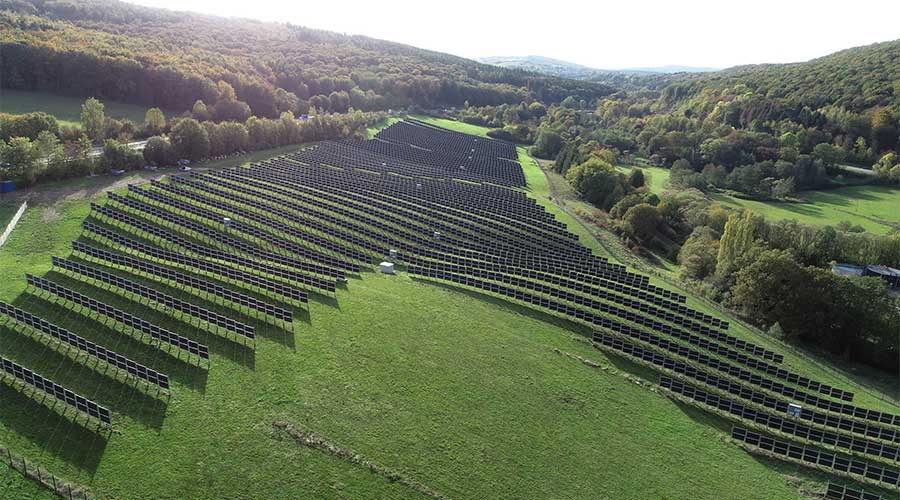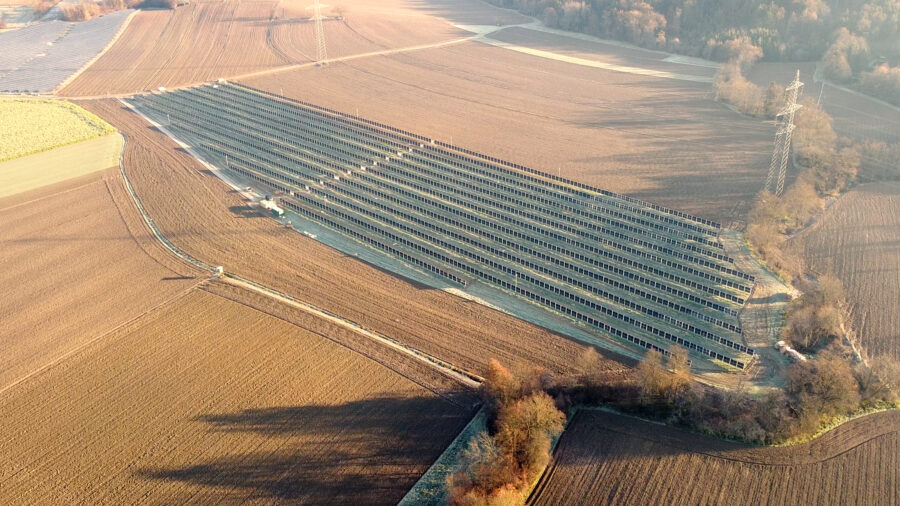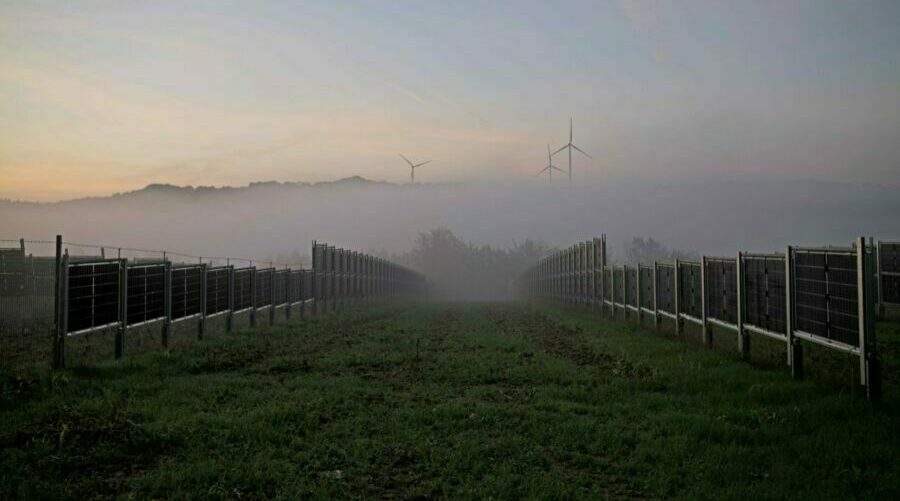Vertical Agri-PV from the technology leader
Known from









Maximized dual-use efficiency
On the path to the energy transition and a significant increase in the share of renewable energies, solar power plants are just as important a source of production as wind turbines. The Next2Sun Agri-PV system Fields2Sun is an ideal solution with major advantages, especially for the realization of large-scale solar parks:
- Efficient alternative to area-intensive, flat-inclined PVA – higher electricity yield
- Grid-friendly electricity production thanks to the favorable feed-in profile
- Dual use of land possible – lower lease payments to landowners
- Combination with other forms of RE (wind, biogas) possible


Vienna Energy Michael Horak Ansaat-Schafflerhof
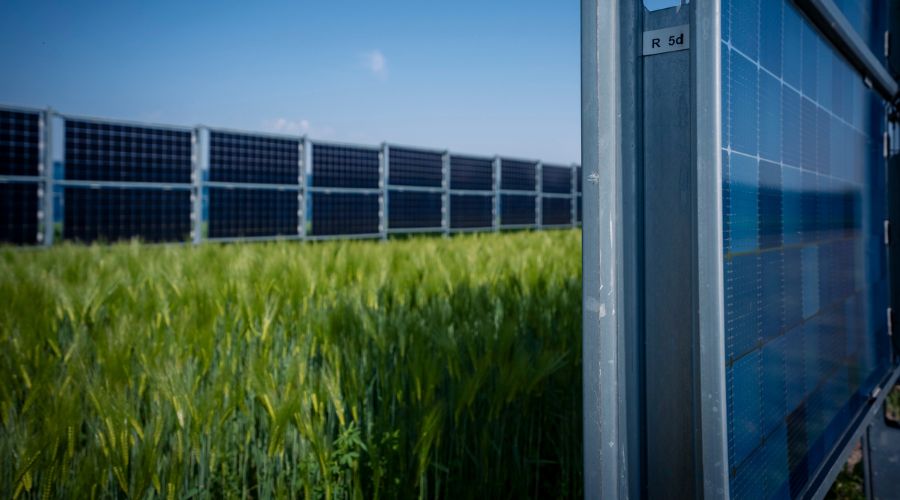
Vienna Energy Michael Horak Ansaat-Schafflerhof
Possible models of cooperation
Next2Sun is the inventor and technology leader in vertical Agri-PV, Fields2Sun, a revolutionary technology that combines agricultural use and sustainable energy production.
- Innovative dual use: our patented vertical rack system enables agricultural land to be used simultaneously for solar energy production, eliminating competition between the energy and agricultural sectors and greatly enhancing land efficiency.
- Flexible system orientation: while an east-west orientation optimizes energy production in the morning and evening hours, when electricity prices are often higher on the market, the north-south orientation enables superior performance in the winter months compared to conventional south-facing systems. This versatility in orientation supports counter-cyclical power generation, contributing to grid stability and maximizing energy yield year-round.
- Technical excellence and durability: by using bifacial glass-glass modules and a robust mounting system, we ensure a long service life and high operational reliability of our systems. Our systems are designed to minimize shading and increase energy yield by utilizing both sides of the module.
- Grid stability: the alignment of Next2Sun's Agri-PV systems optimizes the feed-in profile, improves grid integration and can lead to higher remuneration.
- Compatibility with other energy sources: integration with existing renewable energy systems such as wind and biogas plants is easily possible, which promotes the diversification of energy sources and strengthens the resilience of the entire power generation system.
- Expertise and direct cooperation: over two decades of experience in the photovoltaic industry and direct partnerships guarantee our customers the best price-performance ratio and compliance with the highest quality standards.
Your experts in the field of Agri-PV
Next2Sun utilizes the full potential of agricultural land through a patented vertical frame system and thus changes the coexistence of energy and agriculture.
Our approach minimizes competition for land by integrating solar energy production directly into agricultural land, thereby significantly increasing the efficiency of land use.
This system is characterized not only by the use of bifacial modules, but also by its ingenious design, which reduces shading and withstands wind loads.

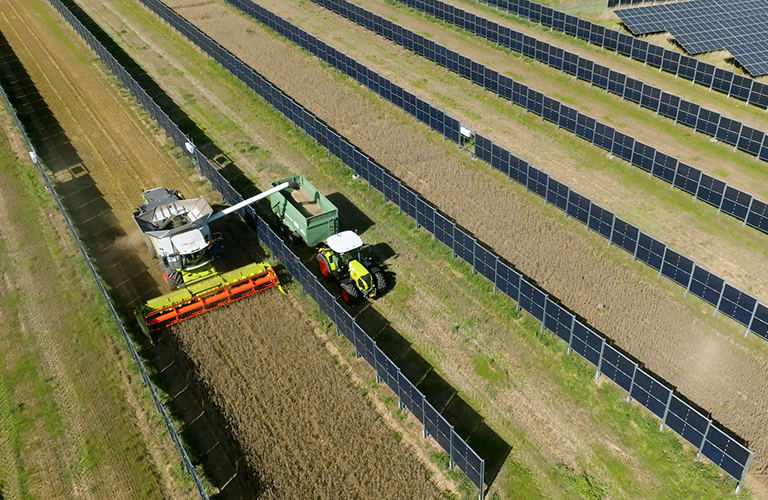
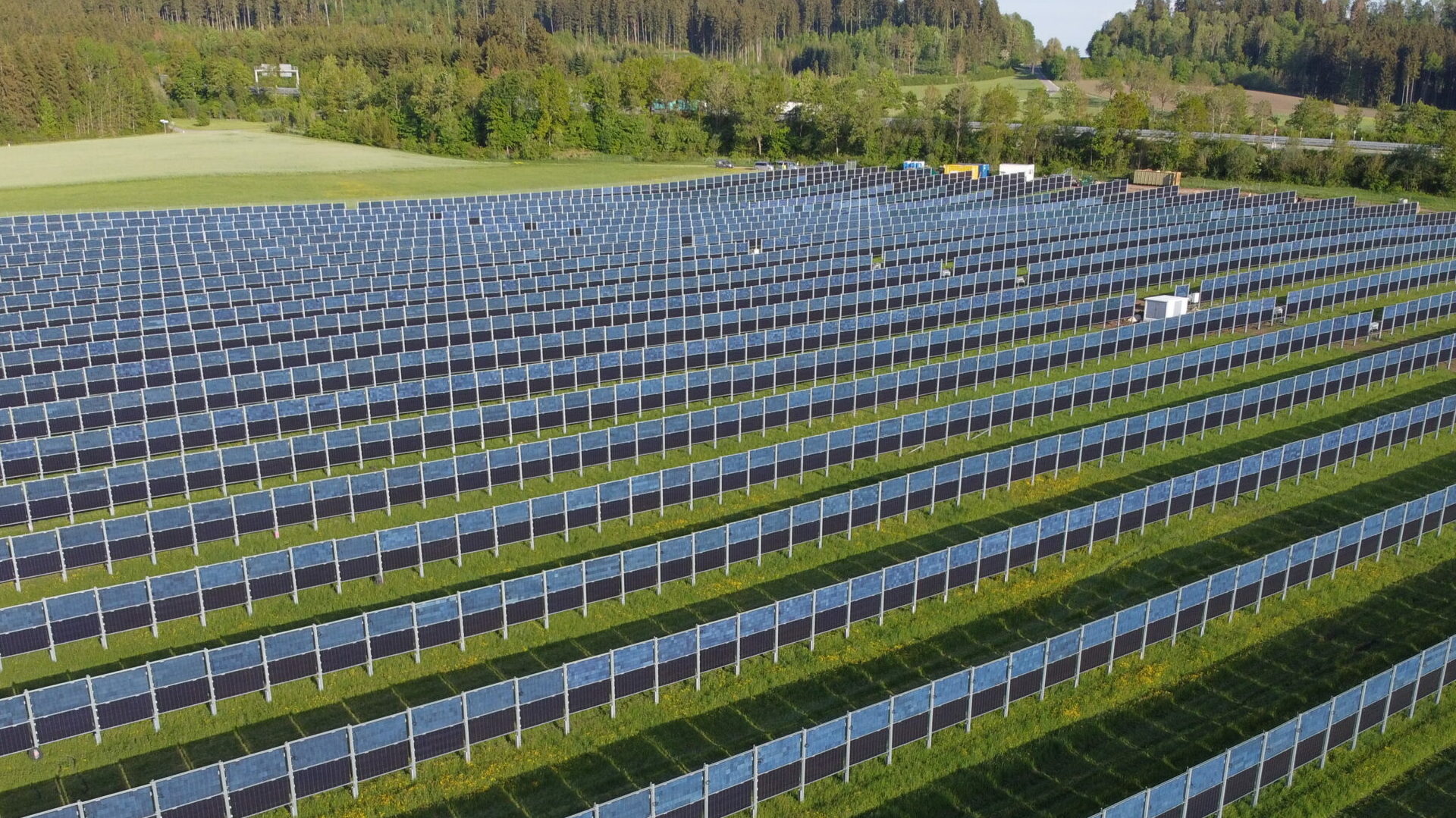
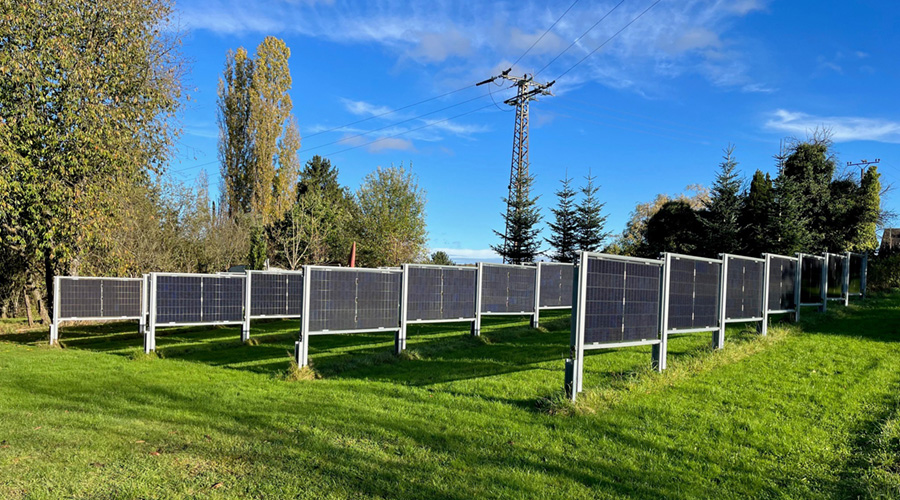
References
For the realization and implementation of Fields2Sun projects, we work together with a number of reliable and experienced experts in the field of photovoltaics, solar power and renewable energy systems.

With more than two decades of experience in project development, the company offers innovative solutions that are both energy-efficient and economically and ecologically sustainable.
Customized energy strategies
Next2Sun is your reliable partner for the planning, development and implementation of your Agri-PV project.
Our customized solutions are specially designed to take local conditions and your specific requirements into account in order to achieve maximum efficiency and cost-effectiveness.
With our innovative system of bifacial modules, we optimize energy production on leased or managed agricultural land.
This strategic dual use reduces operating costs and increases yields at the same time, ensuring a sustainable and future-proof investment in green energy.
Rely on our many years of experience and technological innovation to successfully realize your project.
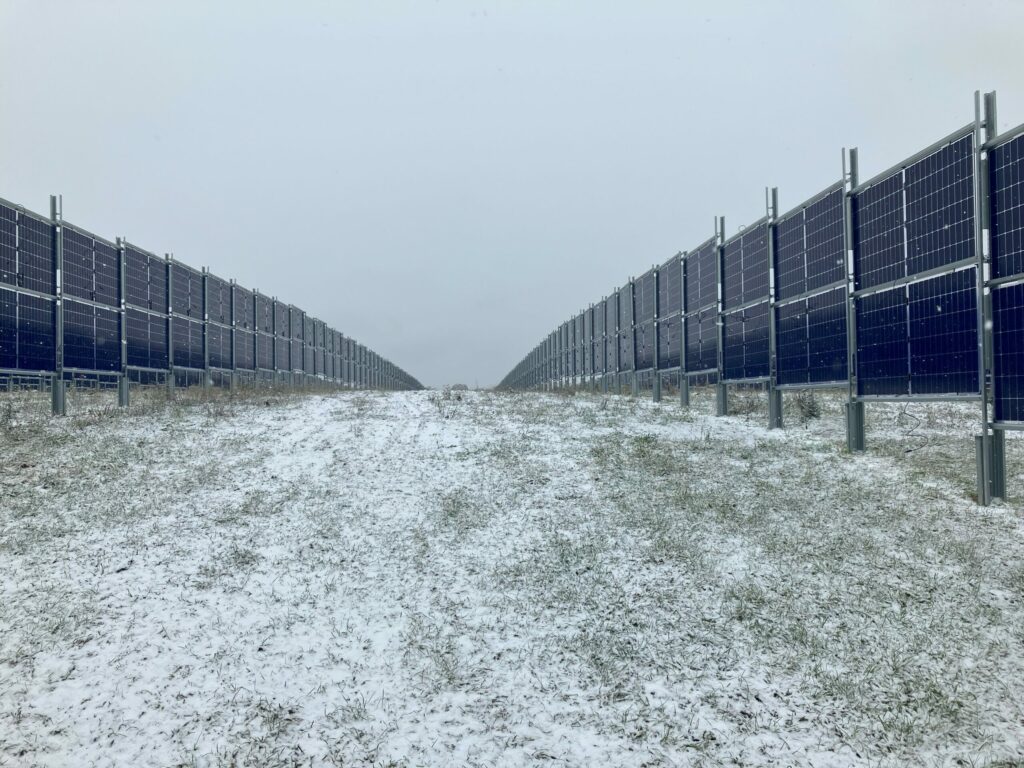
The calculation is based on the Agri-Solarpark Epfendorf reference project.
Efficient use of agriculture and solar energy
The Next2Sun Agri-Solarpark Epfendorf is located on an area of 10 hectares.
The distance between the vertically elevated rows of modules was chosen at 10 meters so that mechanical cultivation of the area is still possible.
Part of the area will remain a mown meadow, while the other part will continue to be used as arable land.
In the coming years, the cultivation of clover grass as well as wheat, barley, field beans and spelt is planned.
With an annual energy yield of approx. 4,000 MWh per year, approx. 1,200 households can be supplied with electricity.
Particularly noteworthy is the combination with the storage facility and the supplement from the innovation tender in the amount of 7.42 cents/kWh as a fixed market premium, in addition to the electricity revenues from direct marketing based on the exchange electricity prices according to EEG hourly values.
This approach already takes into account the profile added value of the vertical east-west orientation.
The system is operated by Agri PV Epfendorf GmbH & Co KG.
Future-proof project planning with Next2Sun
The vertical mounting of the modules makes it possible to better cover the energy demand during periods of low availability of solar power and thus contributes to grid stability.
This increases the market value of the electricity generated and offers project planners the opportunity to realize higher feed-in tariffs.
In addition, the multifunctional use of land for agri-PV and agriculture reduces operating costs and increases the overall efficiency of projects.
Next2Sun relies on sustainable and robust materials that ensure a long service life for the systems and require minimal maintenance.
This reduces long-term costs and increases profitability for project developers.
Our Agri-PV systems are not only an investment in renewable energy, but also a contribution to biodiversity, as the non-agricultural strips directly under the modules can be used for ecological enhancement of the land.
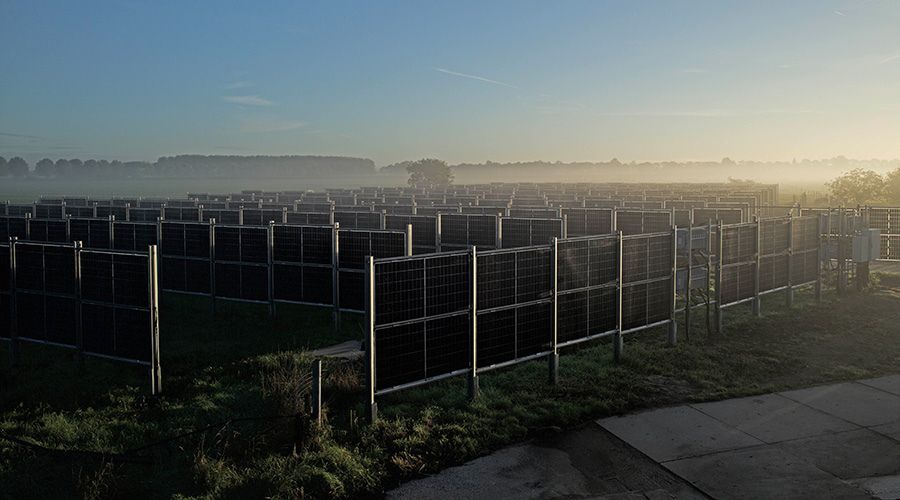
At Next2Sun, we specialize in developing and implementing forward-thinking Agri-PV systems that seamlessly integrate renewable energy technologies with agricultural production. With over two decades of experience in the photovoltaic industry and a strong commitment to environmental protection and sustainability, we provide customized solutions tailored to your project’s specific requirements. Our team of experts supports you from planning through to commissioning. Trust Next2Sun to help you shape a clean, efficient, and economically successful energy future.
Interested in Agri-PV?
Become part of the energy transition with Agri-PV
Our innovative technology Fields2Sun improves grid integration and achieves exceptional yields thanks to its unique design.
Contact us today to find out how we can work together to drive the energy transition and support you as an energy supplier and project developer.
Next2Sun offers innovative Agri-PV project development that creates a pioneering symbiosis of agriculture and renewable energy generation. Our tailor-made solutions can be seamlessly integrated into agricultural operations while minimizing the environmental footprint. With highly efficient energy yields, our systems increase the productivity and profitability of open spaces without compromising agricultural use. Rely on our expertise to successfully implement projects and drive forward the energy transition.
5 good reasons for Agri-PV with Next2Sun
High-quality components
Use of high-quality components (bifacial glass modules and patented frame system designed in Germany).
Grid stability
The concept is conducive to grid stability and enables the connection of systems to already utilized grid branches and higher revenues on the electricity exchange.
Additional revenue
Feed-in tariffs with mandatory direct trading of electricity with vertical east-west orientation (2.5 Euro/MWh above market value of solar with vertical east-west orientation).
Proven expertise
Next2Sun Group has many years of experience in the acquisition, development and construction of RE projects. Your direct partnership with the manufacturer and developer ensures an optimal price-performance ratio compared to other Agri-PV systems.
Profitability
Further specific additional yields (5-8%) compared to the conventional South-oriented PV due to vertical installation of the glass-glass modules.
Guaranteed quality


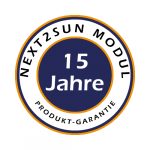






Optimal grid integration and sustainable land use
Next2Sun’s innovative Agri-PV technology Fields2Sun offers a unique solution that combines agricultural productivity and solar energy generation.
The vertical mounting of our bifacial solar modules allows energy production to be maximized at times when traditional south-facing systems are less efficient.
This results in improved energy production in the morning and evening hours with an east-west orientation and increases energy availability in the winter months with a north-south orientation, reducing the load on the electricity grids and enabling more stable grid integration.
This technology supports a more even distribution of energy production throughout the day and minimizes the need for costly energy storage solutions.
The unique arrangement of the modules also reduces the volatility of energy generation and contributes to a more reliable power supply.
In addition, our projects preserve 90% of agricultural land, with less than 1% of the area being built over.
This sustainable approach not only makes it possible to generate 10 % more energy compared to conventional south-facing systems, but also actively promotes biodiversity: the non-agricultural areas offer opportunities for ecological enhancement, which can lead to an increase in biodiversity and an improvement in soil quality through targeted planting and design.
With this combination of ecological and economic efficiency, Next2Sun is positioning itself as a leading company in the Agri-PV sector, offering attractive solutions for both energy producers and farmers.
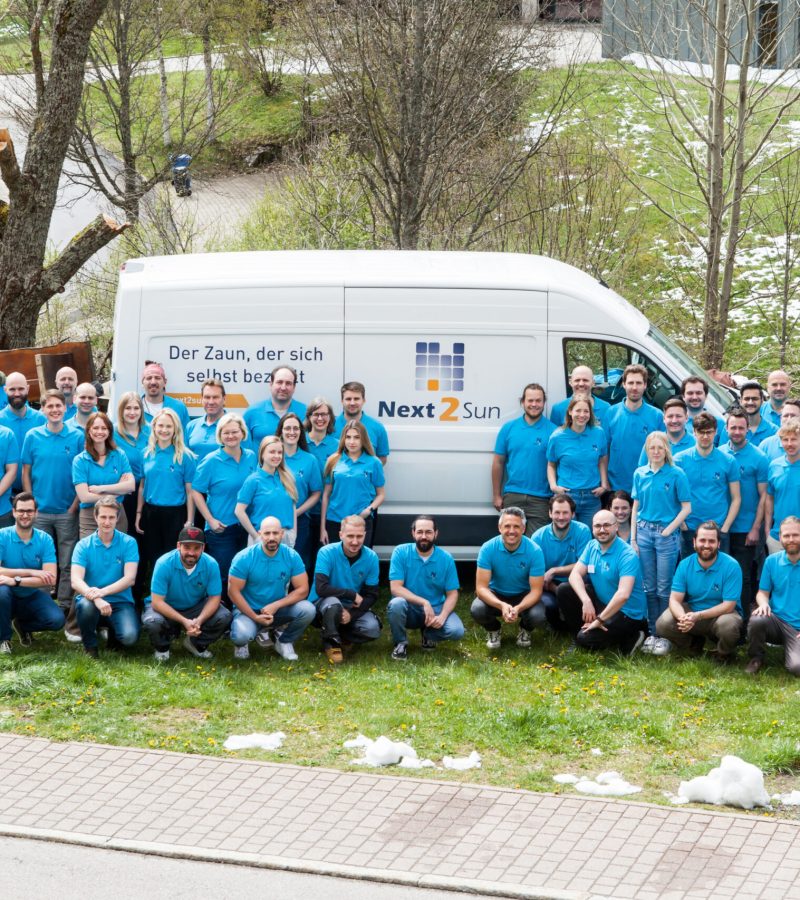
Very friendly and competent!

We say thank you
We at Next2Sun would like to thank all our partners and customers for their trust in our Agri-PV solutions.
Your support enables us to remain at the forefront of sustainable energy production.
Sustainable energy production is key to tackling the climate challenges of our time, and at Next2Sun we are committed to actively shaping this future.
Our Agri-PV systems make double use of agricultural land, increasing efficiency while minimizing the environmental footprint.
By combining innovative technologies with practical agricultural applications, we are helping to make the energy supply more sustainable and environmentally friendly.
Every project we undertake reflects our commitment to quality and sustainability and continues to drive the energy transition forward.

Higher yield compared to south-facing roof systems
The adjacent diagram compares the electricity yield over the course of the day – with the vertically arranged modules, you can achieve up to 10% more yield with Next2Sun Agri-PV.
The area under the orange line is larger than that under the blue line.
This difference is particularly pronounced in the winter months or when there is snow, as the vertical surfaces of the Next2Sun Agri-PV do not need to be cleared.
Electricity yield with Next2Sun agriphotovoltaics
Maximize your yield on the same area: discover how Fields2Sun revolutionizes power generation while increasing the profitability of your open space.
Grid-compatible feed-in profile brings higher remuneration
Systems with the Next2Sun system concept feed electricity into the grid when conventional, south-facing PV systems only have low production. This greatly reduces the load on the electricity grids, particularly in the lower voltage levels. Next2Sun Agri-PV systems can therefore also feed in electricity where the grids are almost fully utilized by wind and conventional PV systems. The feed-in profile of the Next2Sun system matches the daily curve of the electricity price on the electricity exchange. Our system therefore also benefits directly from the energy market. As electricity prices are typically low at midday and high in the morning and evening hours, our Agri-PV systems with the Next2Sun concept achieve higher average revenues. We currently receive 5% to 10% higher market revenues on the electricity market compared to conventional PV systems. Together with the higher yields, the revenue per kW of installed system output increases by up to 25%.

Agri-photovoltaics is a generic term for ground-mounted photovoltaic systems that enable the simultaneous use of photovoltaics and agricultural activities on the same area.
The advantages of Agri-PV for energy suppliers and project developers
In densely populated countries such as Germany, the pressure on available land is increasing as both the energy and agricultural sectors require more space.
Agri-photovoltaics (Agri-PV) offers an innovative solution here by enabling the simultaneous use of land for energy generation and agricultural production.
This dual use significantly increases the efficiency of land use.
Studies have shown that the installation of PV modules not only produces energy, but also has positive effects on agricultural yields through shading and wind protection.
This creates a win-win situation: both sectors – energy and agriculture – benefit equally.
Frequently asked questions
How does the east-west orientation of Next2Sun Agri-PV systems contribute to grid stability?
The innovative vertical mounting of our Agri-PV systems enables improved grid integration by ensuring constant and efficient energy production throughout the day and year.
While the east-west orientation of the modules promotes optimal energy production in the morning and evening hours, when energy demand typically increases, the alternative north-south orientation allows for increased energy production in the winter months.
This balanced energy distribution makes a decisive contribution to reducing peak loads and thus improving grid stability.
What advantages does the dual use of land by Next2Sun Agri-PV systems offer energy suppliers and project developers?
The dual use of land enables energy suppliers and project developers to maximize the efficiency of land use by combining agricultural production and solar energy generation.
This leads to lower land costs and increases the profitability of the project.
In addition, dual use supports acceptance in the local community and promotes sustainable agricultural practices.
How does Next2Sun ensure the profitability and technical performance of its Agri-PV projects?
Next2Sun relies on high-quality, bifacial glass-glass modules and a patented frame system that maximizes energy yield and ensures the longevity of the systems.
Our projects benefit from thoughtful planning and comprehensive support from our team of experts, ensuring high technical performance and optimal economic results.
In addition, we work closely with local authorities and network operators to ensure smooth integration and eligibility under applicable renewable energy regulations.
How does Next2Sun differ from other providers in the realization of Agri-PV projects?
Next2Sun sets itself apart from other providers by combining innovative and patented technology with sustainable project implementation.
This strategic dual use not only promotes sustainable land management, but also optimizes the economic aspects of the project through lower land use costs and higher energy yields, which makes our offerings particularly attractive for project developers.
Your energy independence starts here!
Achieve up to 10 % higher electricity yields per installed kW compared to conventional ground-mounted systems

